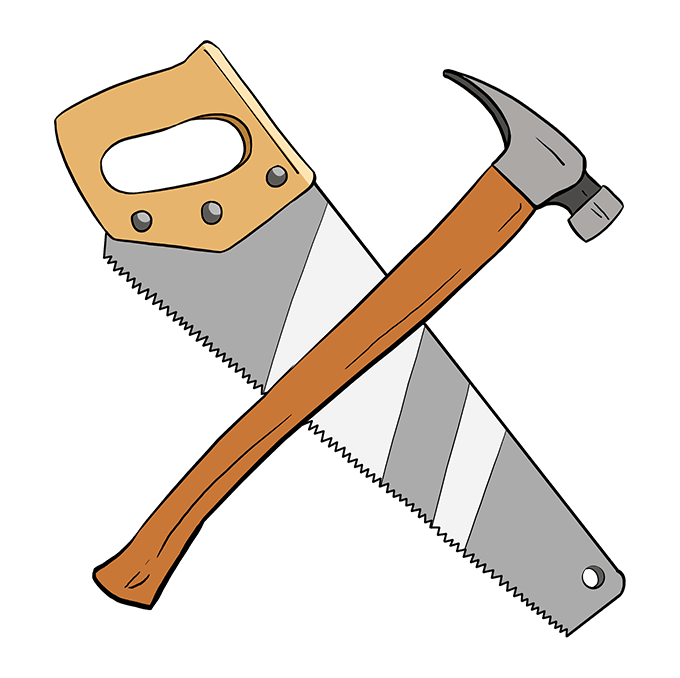Mostly for familiarizing myself with the tools. I don't think i need to print anything but PLA and PETG to start with
edit: i bought a bambu labs a1 mini
I've been eying the entry bambu lab mini, I'm not too keen on the closed aspect, but I figure if i get something cheap and I wanna stick with it i can shell out a few more bucks for a more capable open platform later on and still have something my kid can fuck around with
These entry level ones are a pain in the ass to find tune, though (which has to be done frequently). I don't know the cost of the cheapest automatic one, but I've got a friend with more expensive Bambu Labs and they're so much closer to "set and forget".
I have an Ender-3 V3. It has automatic bed leveling. Creality added quite a bit of features to it over the older budget Ender-3's while still keeping it relatively affordable. It's a lot faster than the prior ones too. I also have an Ender-3 V2 SE so I've had plenty of time to do some direct comparisons. While the older V2 SE is more finicky to level the bed, and it's slower to print, mine has been very reliable. Weirdly enough I find I use it more often for larger prints that may take several days, like big flat panels for robotics projects or big Gridfinity bins. I use the V3 for the quicker smaller prints that I want same-day.
I replaced the V2 SE's frustrating glass bed with a magnetic one, like the V3 comes with. It's much easier to deal with all-around. I replaced the bed springs with better ones so that I don't need to calibrate nearly as often. I got one of those better extruder kits for it. I think the Creality people realized how crap the V2 SE's stock plastic extruder is, so they kept the price for the metal upgrade kit at a palatable USD$10 and made it very easy to do the swap.
I'm reluctant to make a strong recommendation because the tech moves so fast and I haven't been into it for a couple years.
Same. I can say what worked for me, but there are certainly better options available now. The only thing which has interested me in the meantime is the Voron 2, but that is ABSOLUTELY not a beginner recommendation lmao (it is a design that you have to source and build yourself, sometimes partial/complete kits come and go but they are expensive).
These entry level ones are a pain in the ass to find tune, though (which has to be done frequently). I don't know the cost of the cheapest automatic one, but I've got a friend with more expensive Bambu Labs and they're so much closer to "set and forget".
In my experience, these things are like bicycles. There are hundreds of them. They all have wheels, handlebars, breaks, pedals. Some have shock absorbers and bells. If you buy a bike at Walmart, it will work, but the person who assembled it will never put as much love into it as you possibly can. Or if it comes in a box and you have to assemble it yourself, you'll follow the instructions and get it working, but it will still kind of suck until you take various bits of it apart and put it back together a second or third time.
If you want a perfectly tuned machine, you have to actually use it first and observe how it's performance falls short. The more expensive ones will (should) have higher quality components and be less finicky, but no matter what you get, it is going to require maintainence. I work in a machine shop on CNC machines which cost a quarter of a million dollars and I still have to tear these things apart and do all sorts nutty maintenance tasks (above and beyond the documented "preventative maintenance").
It wasn't until I disassembled my printer beyond the flat-pack state it came in and put it back together, after about a year of dicking around with it, that I got it to a state where I can start it up after months of idleness and still nail a print on the first shot.
Do you want a 3d printer as a hobby, or as an appliance? I started with an Ender 3, tinkered with it until it became an entirely different printer and then broke. Did the same with a Ender 3 S1 Pro. I've learned how to fix just about every part by spending hours tinkering with it. I hear Prusa printers are similar but also just a little better in most respects.
I recently got a Bambu A1 Mini. After spending a few minutes setting it up, it ran all its calibrations automatically and connected to my wifi. Then I pulled up a model I liked and hit print from my phone, and it just worked. I'm pretty tired of constantly calibrating and leveling my old printers, so it's nice to have something that does its job without me babying it.
I'll probably upgrade to an X1C early next year, unless there is some new hotness by then.
Downside: firmware isn't open source like on the Ender.
The A1 mini is exactly what I'm eyeing. This let's me test the waters without a huge investment and then if i feel like it's worth persuing I can upgrade to something more hands on and flexible
That's my thought process as well. Assuming nothing happens that causes me to dislike this, I'll buy the big fancy one later and then give this to a friend's kid or something.
oki just pulled the trigger on one
endless plastic trinkets, here i come
Just curious, have you gotten yours yet? How do you like it? Considering buying the AMS Lite for mine this weekend. Also started using Orcaslicer to help me calibrate filaments - it's another slicer built on a BambuStudio base but with more features including a bunch of built in calibration tools.
My a1 mini arrived yesterday and I've been having a great time with it. So far I've only used the maker world app to print pre sliced models, but I'm gonna start digging in to the slicer this weekend
Recent thread: https://hexbear.net/post/3153755
I bought myself a Creality Ender-3 v2 for $200 a few years ago and am still running it (despite it sort of being a Ship of Theseus at this point). At this point, there are budget printers with more available features (offered by Creality, as well as many other vendors). I highly recommend something with a Z-probe (for mesh leveling), and with some viable (i.e. observed in the wild, not just advertised as a feature by the vendor) method to run 3rd party firmware on the machine. I also recommend getting something somewhat popular, as this will make it easier to find replacement parts, printable mods, customized and fine-tuned firmware, as well as troubleshooting advice.
PLA and PETG are pretty easy to print. PLA is the easiest, PET(g) is a bit more sticky / messy, but is much stronger, tolerant to direct sunlight, and doesn't require an enclosure like ABS. You should have no problems printing these on any budget "bed slinger"
Mostly for familiarizing myself with the tools.
Cura might have better tree supports, but I'm a PrusaSlicer dead-ender personally. At some point you many want to learn how to use some modeling software, whether to create bespoke designs, or to modify STL files you find on Thingiverse/Printables so they can work with whatever materials / problems you have on hand. In particular, a lot of designs which require magnetic inserts or nuts/screws will only work if you have the exact magnet/screws on hand, but this can be fixed with a little elbowgrease.
I've heard that the ender 3s are really fiddly. I'm not opposed to tinkering, but if I'm being honest i just want something i can push print on with minimal fuss for my first printer
Anything in that price range will be fiddly. You can spend a little more (eg. Bambu, Prusa) and gain reliability and support. But I've used $200 Enders and $50,000 commercially maintained Stratasys Fortus machines and aside from printing ABS and dissolvable support material, my cheap hand-tuned POS outperforms it in every regard. We just replaced the Fortus with a couple Utilimaker S7s at work and I'm still watching mechanical engineers print spaghetti at least once a week.
Mostly non-printer-specific ideas/advice/etc:
As much as I detest those evil rentseekers at Autodesk, they have a legitimately awesome web-based 3D modelling program called Tinkercad. The learning curve is a lot more gentle than desktop 3D programs.
Gridfinity is a ton of fun. It's an open standardized grid storage system. Get a bunch of 6x2mm magnets, they're cheap in bulk. You can build out a nice custom easy-tool-access storage system for your work area. Just remember to make sure you're using a consistent magnetic north/south arrangement! A jig will help.
If it has a profile for whatever printer you get, install Cura. Open source slicing software. It runs very fast even on budget hardware. I have a budget 11th-gen-i5 laptop with only 8GB RAM and Intel graphics, and Cura is still super-fast on this thing.
PLA filament is a pain in the ass to smooth. If you're planning to print curved pieces and aesthetics are important (say, for cosplay stuff), you're going to want to do sanding by hand, gradually working from coarse to fine grades, and maybe doing a clear coat at the end. Even relatively low-power powertools like dremels will heat the PLA and deform it.
PLA prints don't like really hot ambient temperatures, like on the dashboard of an unattended car left in direct sunlight on a sunny summer day. Household temperatures would be fine though.
PLA is not food safe. I'd read up on the details of this if you're planning on using PLA prints as kitchen decorations. Maybe give them a thorough polyurethane clear coat. And never let them contact food.
But those drawbacks aside, plain old 1.75mm PLA is the best type of filament to start with. It's non-toxic, made from renewable material, incredibly cheap, easy to find, easy to handle, reasonably durable, works in pretty much every printer that takes filament, and is made by a ton of different manufacturers in every colour of the rainbow. Including "rainbow".
Gridfinity is honestly pretty compelling. Early on in my research I came across void star and I've watched a ton of his videos


